
今年颱風來的晚,所以定置網休網也慢了些
只聽聞之前辦尾牙(颱風季來臨前辦尾牙,然後就休網)
颱風要來不要,休網時間點都延至九月才作業
02.
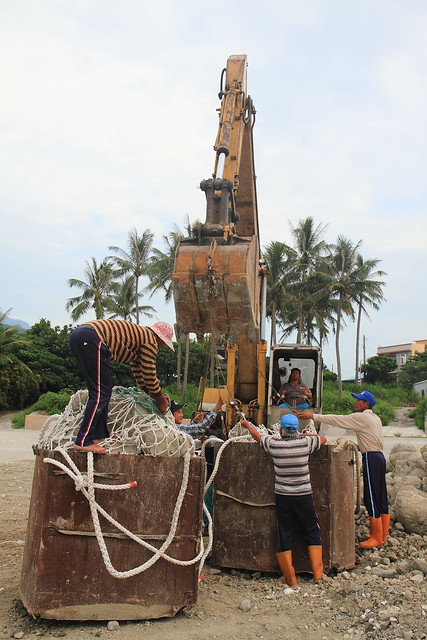
休網這名詞是我自己想的,因為我也不曉得正確名稱
只知道白守蓮(又稱比西里岸,靠近三仙台)的定置漁網因颱風季節到
為了保持定置網漁具不被海浪衝擊破壞,所以需要作「加固」工程
03.
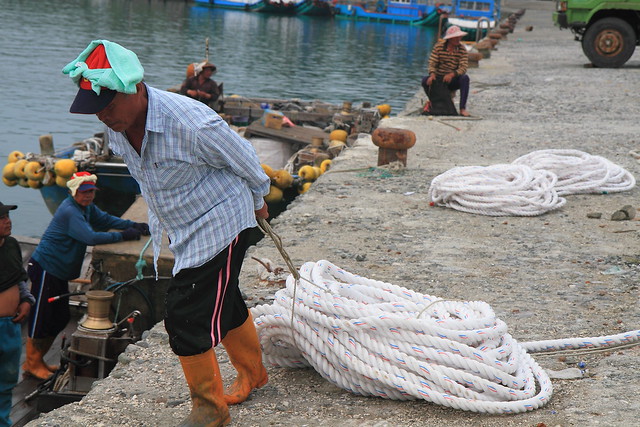
這些又粗又重的尼龍繩都得讓船載出海
04.
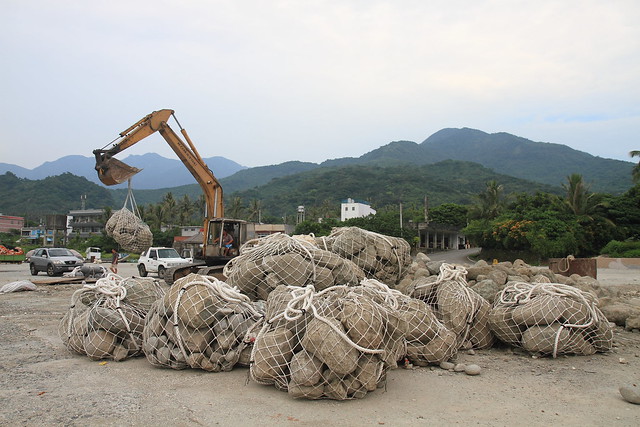
這裝好一袋一袋的大石塊,由膠筏船隻一次載運二袋出海
05.
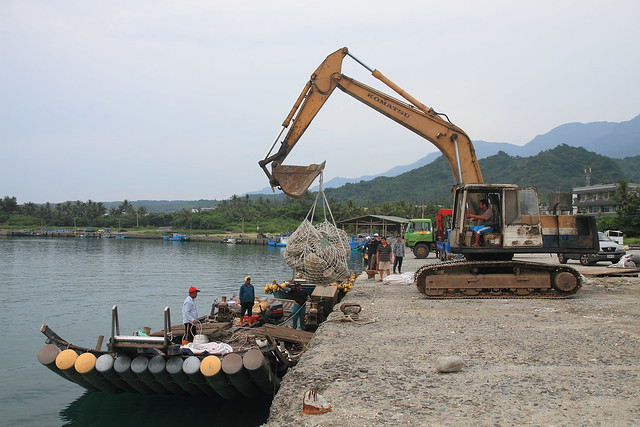
挖土機把石袋放置船上
06.
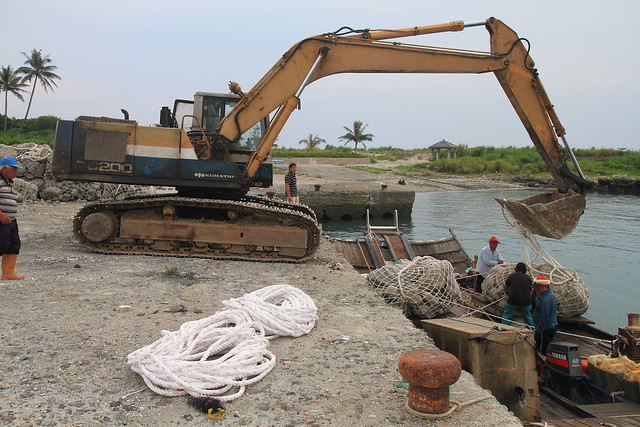
左右各一,得調整好石袋位子,保持重量的平均
07.

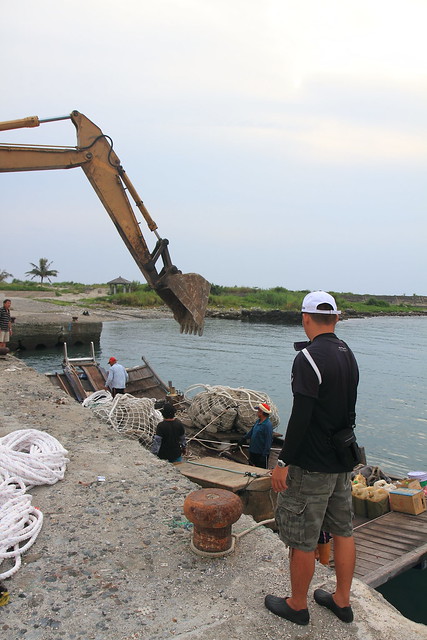
當日同行的伙伴有Matthew(馬修)與信志
08.
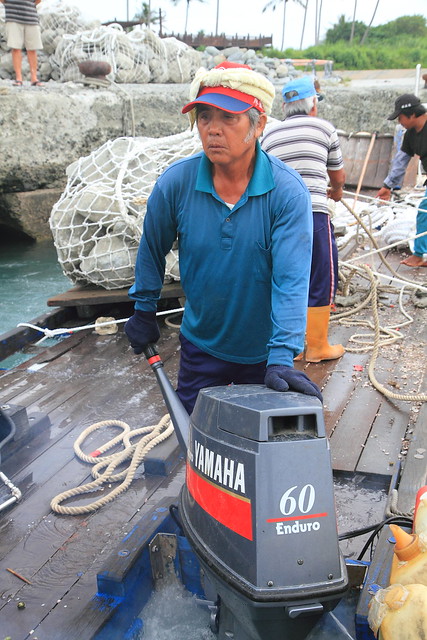
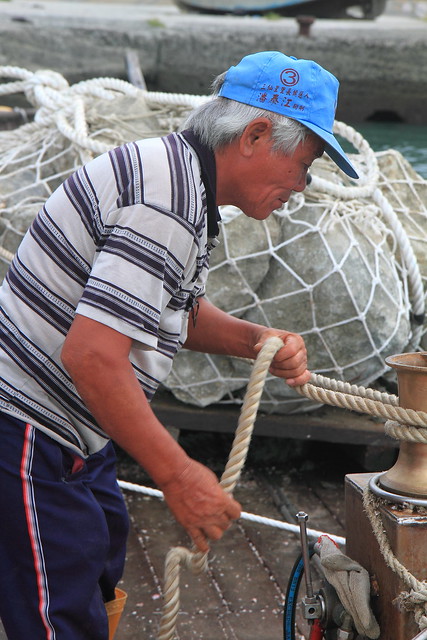
好久不見的定置網作業船員
09.
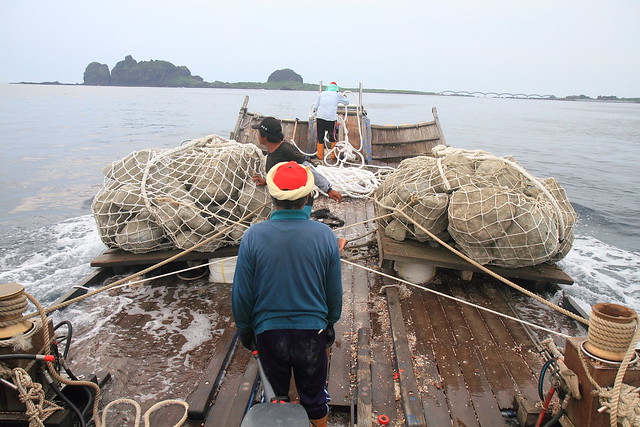
船載很重,船身兩邊幾乎快與水面平行
大叔:「放心,等一下船還會表演潛水」
10.

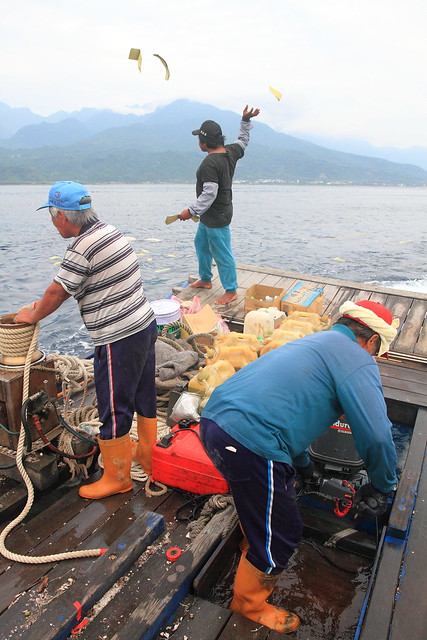
撒了一些$$給好兄弟
11.
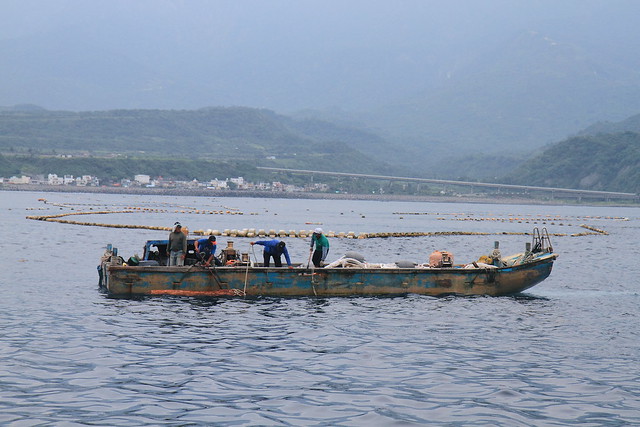
來到定置漁場,另一艘指揮船在處理漂流木
12.
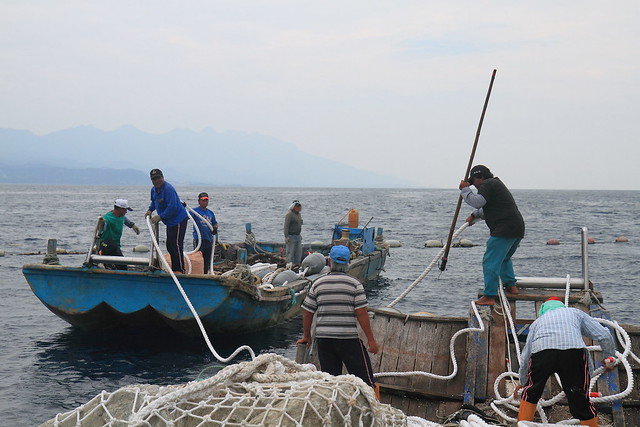
流程是這樣的…
載石頭的船丟繩給指揮船,然後朝定置網漁具外行駛
指揮船會找出固定繩點,將繩固定在定置網漁具上
載石頭的船將繩拉直開到定點後,再將裝滿石頭的袋子送到大海
看圖應該比較容易懂,如下:
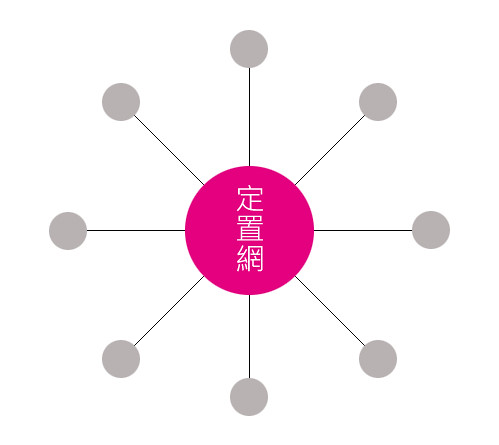
我畫的如此精美,看不懂我就真的就沒折了
灰色的是石頭,黑色是尼龍粗繩
把網子拉開固定,這樣颱風大浪來襲,漁具才不會糾結在一塊
13.
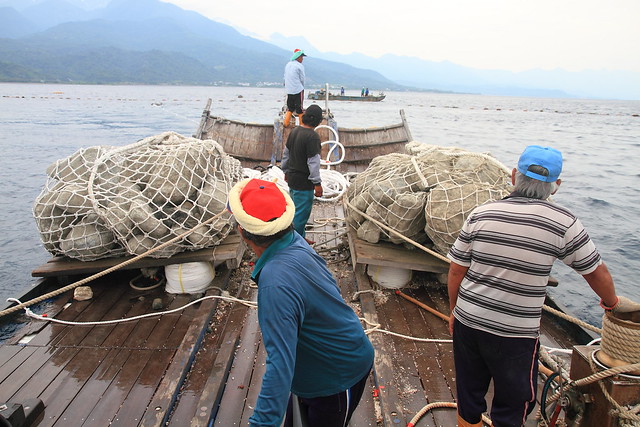
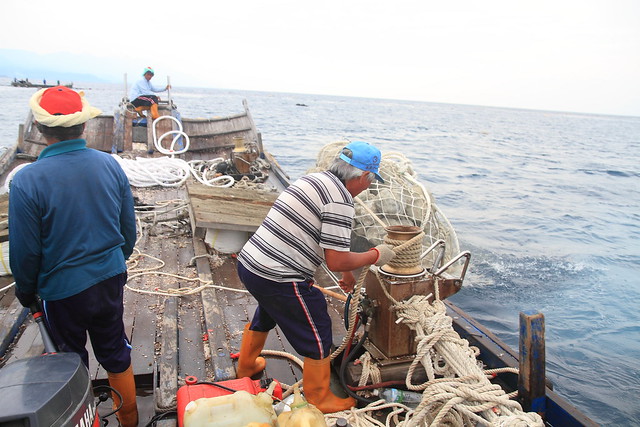
這麼重的石袋要跳海,當然要靠機具
同事說,有發生過石頭沒同時丟下海而翻船的意外
15.

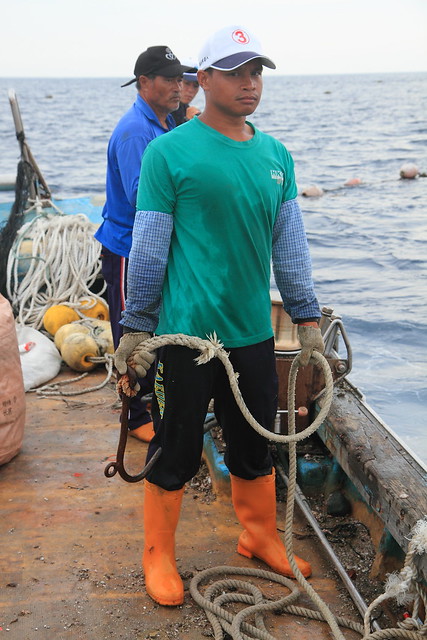
石袋入水後,我們登上指揮船繼續拍攝
16.
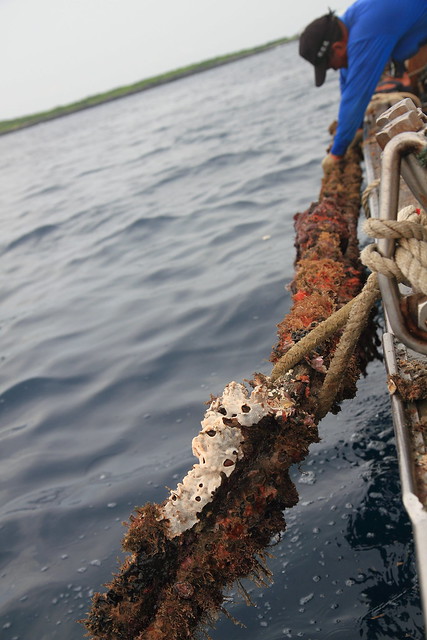
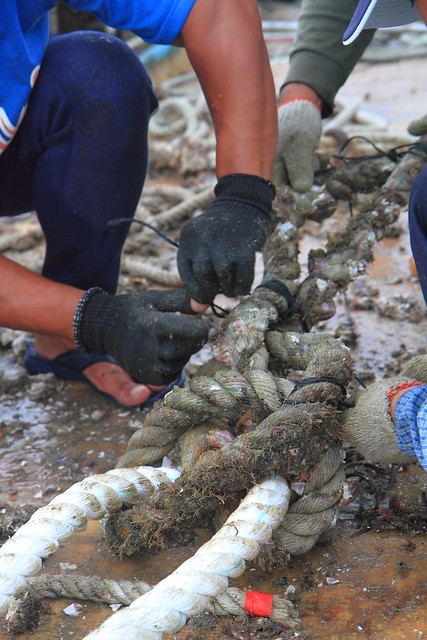
指揮船得找出網具綁繩的點,及清除上面的海草或甲殼生物
17.
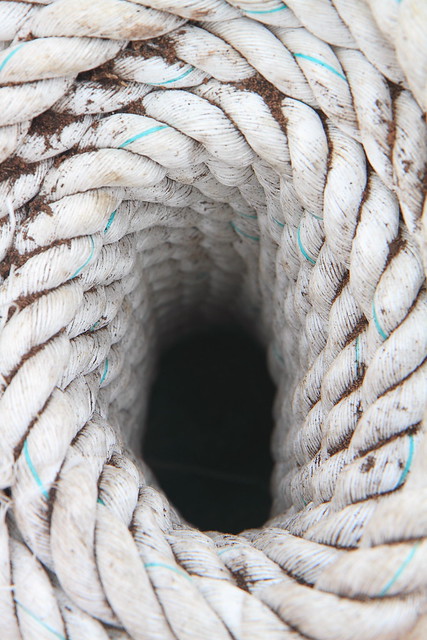
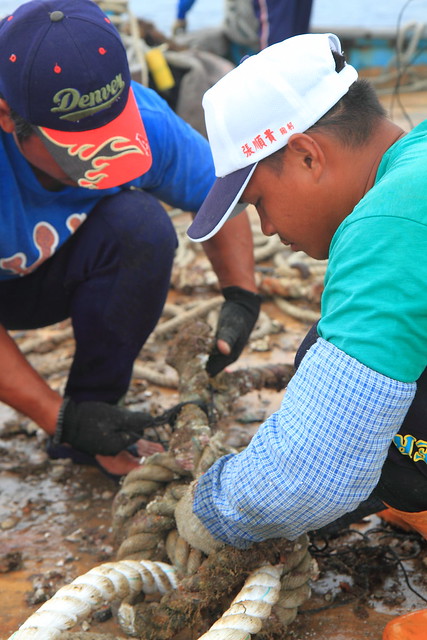
船板上到處可見小螃蟹及小魚被撈了上來
18.
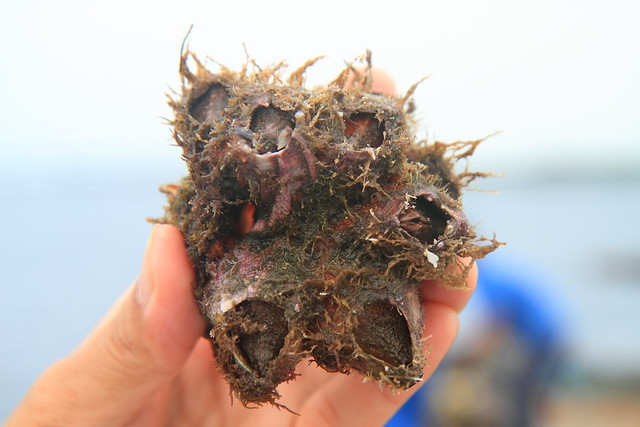
這玩意俗稱「火山」,原住民語發音好像叫「不治」還是「不助」去了
今年我媽向原住民買了一次,真的是好天然的海味,煮湯食其肉不用加鹹
吃的方式得將這火山蒸熟,裡面半液態的肉蒸熟後,就變成乳白色的鮮肉
有點鹹,但這海味與吃三角螺或海瓜子一樣,讓人懷念的礁石海味
平常取得不容易,且後製處理很麻煩(因為要處理硬硬的殼)
所以市面上要吃到幾乎不太容易
大叔說,現在吃裡面沒啥肉,五月裡頭肉較飽滿
原來火山和魚一樣,也有吃不飽的時候
19.

八點四十六分,咱家雞婆吃飽太閒之沒事找事幹
就為了救一隻在船板上跳來跳去的魚,食指被咬到噴血…馬修見狀立刻用膠帶幫我指血
20.
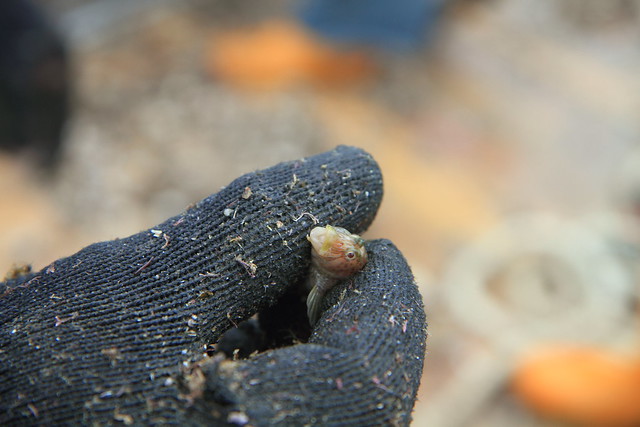
咬我的不是這隻,但漁民告訴我這魚有二顆牙齒,另外…他們很兇
先前救了五、六尾都沒咬我,咬我的那尾很「大尾」,想主宰自己的人生,不給我救
21.
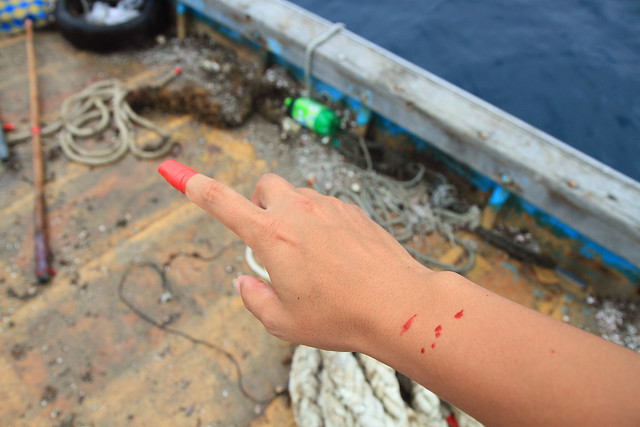
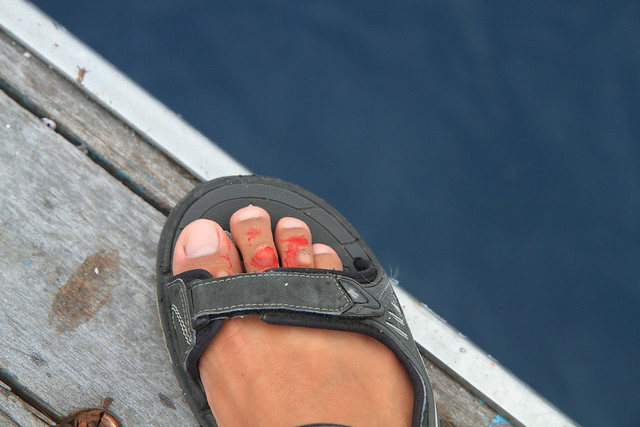
看圖就知道,真的有噴血,白色的衣服和褲子也都有沾有血漬
也不想想我是血氣方剛的熱血青年,稍微破個洞就噴了
朋友說,這魚解了你的血光之災兼高血壓中風之兆
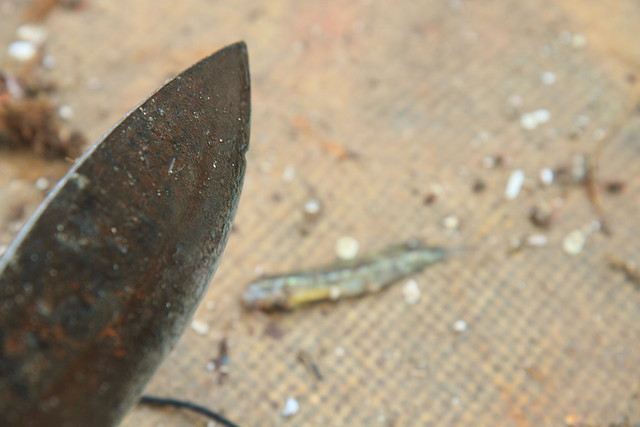
但,既然這魚不想活,我想也該給他制裁了
22.
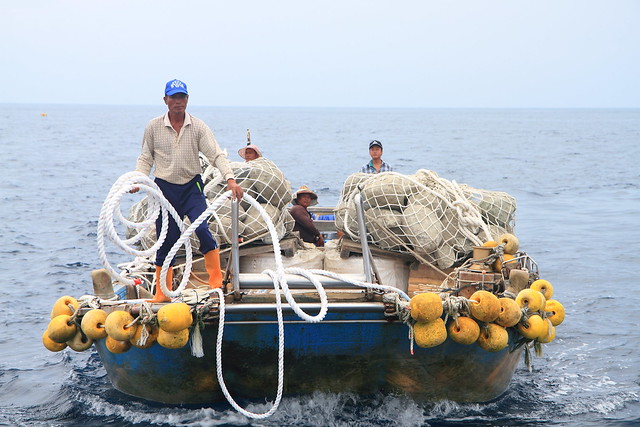
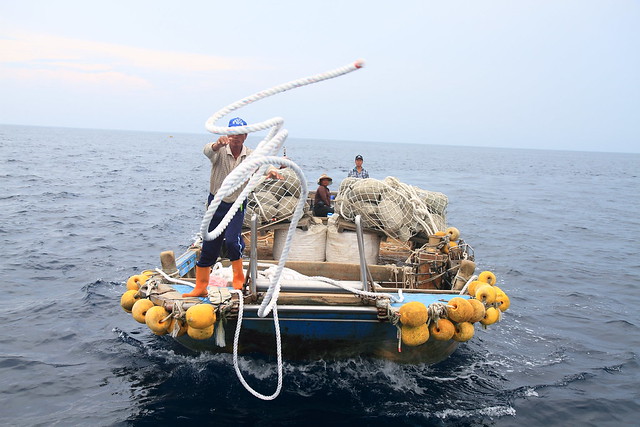


等很久,載石袋的船終於又來了
一樣的作業,拋繩,然後由指揮船指揮定位,再將石袋丟至大海
23.
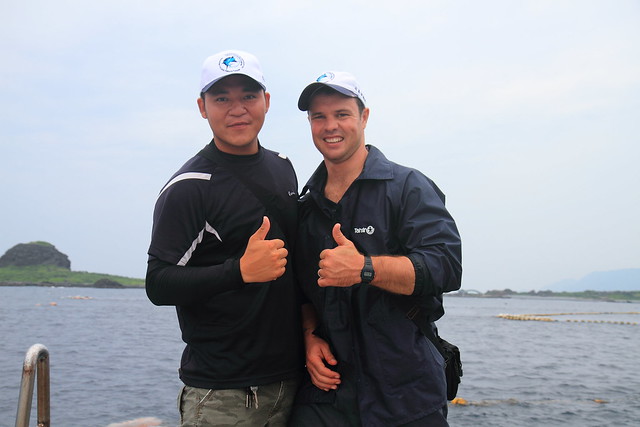
這是馬修第一次搭乘定置漁船
24.

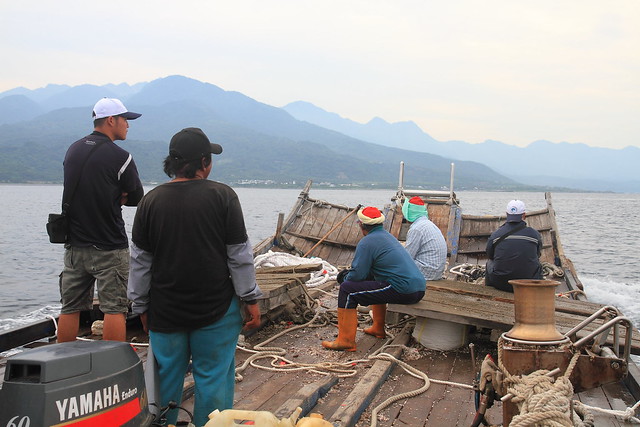
船將石頭丟入海後,我們便結束拍攝的工作,搭載石頭的船回港
以下是我用7D及馬修用SONY DV拍攝的作業畫面:
Field Notes: Sept. 7, 2010
Sailfish tagging team
Objective: Visit Siaogang to observe securing Set Net
Meeting at the wharf at 7am the Set Net crew are already under way. Having
prepared 3 X 10 meter barges for the transportation of the sea anchors, our team
arrives amidst the loading activities. A Set Net entails the use of some heavy earth
moving equipment and trucks. The net itself is constructed with thick multistrand
filament ensuring longevity in a turbulent ocean environment. A significant amount
of biofouling also occurs during the long deployment of the net and gear in 30 meter
deep ocean waters.
To secure the net matrices spanning 500 sq. meters, large 5000 kg bags of rock
are dropped to the sea bed. Placing these in the correct position requires the skill,
teamwork and expertise. The net bags are filled on the wharf using an excavator.
The rocks independently would be 60 kg and upwards. These bags are laced shut
prior to being balanced on a waiting barge. Two bags per barge placed either side
for synchronized release. The barge sits low in the water powered by a small 60 hp
outboard the rocks are gently carried to the site.
Another barge is already on site removing driftwood and debris from the recent
typhoon. The men are also inspecting the condition of the ropes and guide the new
anchors into place. This process requires hand signals and patience. The line holding
the net is hauled aboard the lead barge, the fouling organisms are removed from the
buoys and line, a 7 cm diameter rope. A new line attached to the rock is fastened
to the net, the large rope cumbersome, requiring the manhandling of 3 persons.
Once the line is secure the barge can be directed to position. A 3 dimensional
conceptual image of the net allows the foreman to guide the transport barge; points
of reference from the broad ocean horizon are difficult to comprehend however
the rocks are winched overboard with the line pulled tight by the sinking rock.
The rock becomes part of the sandy seabed. These provide artificial reef structure
for smaller fishes and crustaceans. The environmental friendly set net harvest larger
migratory fish and has been used by the tagging team in dispersing conventional
and archival tags on pelagic fish caught in its labyrinth. The morning on the ocean
provided an appreciation for the work and technology that goes into this fishing
technique and restored a sense of expectancy as the typhoon season passes.
圖文編輯 / Matthew. 洪曉敏
影片 / Matthew.洪曉敏
圖文編輯 / Matthew. 洪曉敏
影片 / Matthew.洪曉敏